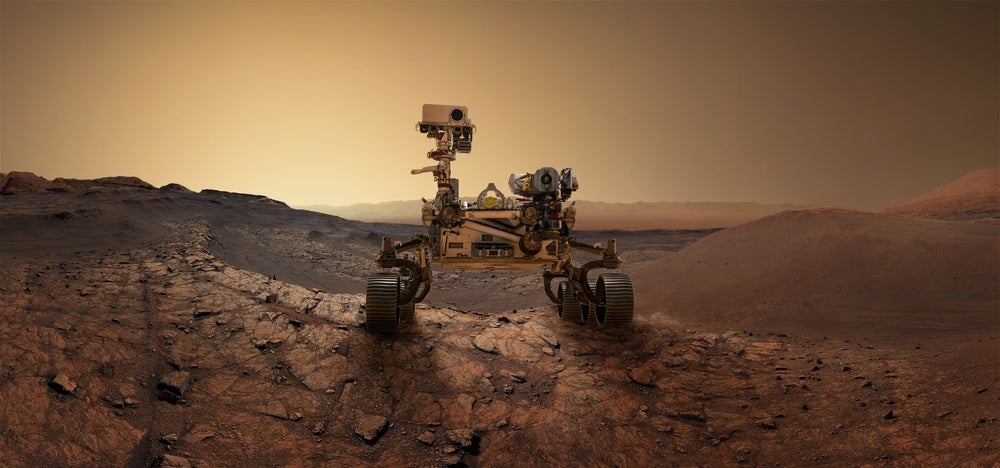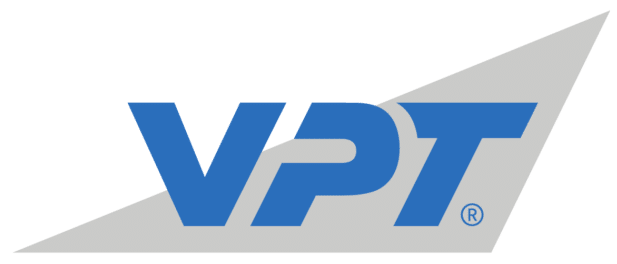
With over 180 space launches last year, a 27% increase over the previous year, both government and private organizations continue to launch space missions at a rapid pace.
The United States, Aireon, NASA, and ESA have all recently launched a diverse range of space missions, from Global Positioning System (GPS) satellites to vehicles exploring the surface of Mars, and long-term deep-space programs to explore the outer planets, such as Jupiter and its many moons.
The spacecraft involved in these missions rely on power components from US-based VPT, which has been successfully powering spacecraft and avionics over the last 25+ years, with its DC-DC converters, EMI filters, and many other space-ready accessories.
Innovative space missions featuring VPT systems
Humanity is pushing deeper into space and embarking on more ambitious projects than ever before. Doing so requires a new range of state-of-the-art power solutions for lift-off, navigation, and exploration. From small-scale satellite constellations in low-Earth orbit (LEO) to long-term investigations of Jupiter’s moons, VPT’s range of highly efficient, radiation resistant components offer today’s space pioneers more options to explore space.
Powering the future of GPS satellites
GPS satellites are becoming ubiquitous, with millions worldwide relying on GPS directions for traveling and deliveries, and many more for videoconferencing and telephone calls. GPS satellites operating in mid-Earth orbit (MEO) offer a balance between coverage area and signal latency making them most suitable for GPS and real-time communication applications.
VPT has been part of the GPS payload power system for nearly 20 years, with VPT DC-DC converters powering many of the current GPS satellites in orbit, demonstrating outstanding commitment to the industry that depends on VPT’s knowledge and component dependability to keep the modern world operating and communicating.
The next generation of GPS satellites include the GPS III SV03 from Lockheed Martin, weighing in at over 9,000 pounds, and one of the most powerful GPS satellites yet. Designed to be three times more accurate, with a 15-year lifespan (50% longer than previous generations), the GPS III was recently launched as part of the US Department of Defense’s program to update its GPS satellites and joins a constellation of 31 satellites. Seven more satellites are expected to be launched by the end of 2023, with the GPS III Follow On (GPS IIIF) program boosting the constellation to the tune of 22 additional satellites thereafter.
With plans to upgrade the entire constellation over the next few years, the VPT components featured in these next-gen satellites will be 25% more efficient than other GPS satellites currently in orbit.
Aireon’s world-leading air traffic monitoring system
With the final launch of the Iridium NEXT LEO satellite network in 2019, Aireon completed the world’s first global air traffic monitoring system. Their space-based Automatic Dependent Surveillance-Broadcast (ADS-B) system allows for real-time surveillance of air traffic and analytics, precisely locating all aircraft in flight, while eliminating blind spots, with 100% global coverage.[i]
The system covers any aircraft equipped with 1090 MHz / ADS-B equipment up to 127,500 feet above ground level. Depending on user needs, position reports are available for subscribed aircraft with an update rate of 4 seconds, 30 seconds, 1 minute or 5 minutes – with a universal latency of less than 30 seconds.
With a total of 75 payloads now in space, this system provides more efficient flight routes, accurate arrival and departure estimations, increased safety, and faster emergency response times, with a decrease in CO2 emissions. None of this groundbreaking technology would be possible without VPT components; their unprecedented efficiency and reliability are helping to future proof air traffic surveillance.
New insights on the Martian surface with Perseverance
The Mars Perseverance rover, launched by NASA in 2020, successfully landed on Mars in February 2021. As of May 2023, Perseverance had traveled 18.62 km (11.57 mi), taken over half a million images of the Martian surface, and collected 17 rock samples[ii]. The mission also includes the very first helicopter on Mars, which is still flying around, helping the rover to explore.
Several VPT components are powering elements of the program, each of which is designed for harsh radiation environments, with TID of 100 krad(Si), Enhanced Low Dose Rate Sensitivity (ELDRS), and Single Event Effects (SEE) performance up to 85 MeV/mg/cm2.
Although only designed for one Earth year, the rover is now starting its third year of operation. a testament to NASA’s $2.7 billion investment and VPT’s design and build program for space exploration, contributing to the historic Mars Exploration Program and providing a steady stream of new insights on the Red Planet.
Deep space, long term missions – to Jupiter and beyond
On 14 April 2023, The European Space Agency (ESA) successfully launched its Jupiter Icy Moons Explorer (JUICE) mission to explore Jupiter and its moons, Ganymede, Callisto, and Europa.[iii] The mission aims to investigate the potential of these moons for life and to study Ganymede’s magnetic field.
The spacecraft will take eight years to reach Jupiter, with an arrival date of July 2031, when the spacecraft will start on a series of 35 flybys between July 2031 and November 2034, using Jupiter’s gravitational pull to guide it into orbit around Ganymede. Data will be collected using various scientific instruments, and the spacecraft will remain in orbit until its propellant is exhausted, eventually crashing into the moon around the end of 2035.
Conditions for this mission are extremely harsh. Jupiter features the largest magnetic field of all the planets, severe radiation levels, and is also a long way from the sun.
This is why ESA turned to VPT to provide radiation hardened, radiation tolerant, and radiation immune isolated DC-DC converters, non-isolated point of load converters, EMI filters, and accessories for this challenging, deep-space mission.
Award-winning expertise to power a growing space industry
Space missions require high-reliability power supplies for success. Drawing on decades of established spaceflight heritage, VPT’s space-ready products provide solutions for mission-critical space programs.
“VPT’s wide range of space-qualified DC-DC converters are suitable for space programs of all levels. GPS satellite programs, as well as deep space missions, require higher-level component screening and radiation requirements, which our SVR Series is well-suited for.” VPT’s Director of Engineering, Jeremy Ferrell, states.
“MEO and GEO programs have different requirements depending on a customer’s needs, but our SVR, SVL, and SV Series have all been used on programs at these levels. And VPT’s award-winning VSC Series of space COTS (commercial off-the-shelf) converters offer an appropriate level of radiation tolerance at a very competitive price point and are ideal for LEO applications. VPT’s robust investment in research and development enables us to provide an unparalleled selection of products and services unrivaled in the industry.”
As the number of satellites and space programs increase, specialized power supplies for launch vehicles and deep space missions become ever more necessary.
For decades, innovative space programs have relied on award-winning company VPT to supply mission-critical DC-DC converters and auxiliary items. VPT offers efficient, effective solutions for delivering spacecraft safely to where they need to be, whether delivering GPS satellites to orbit, deep space exploration missions to the outer planets, or long-term planetary explorations to search for extraterrestrial life.
[i] https://aireon.com/
[ii] https://mars.nasa.gov/mars2020/
[iii] https://www.esa.int/Science_Exploration/Space_Science/Juice


